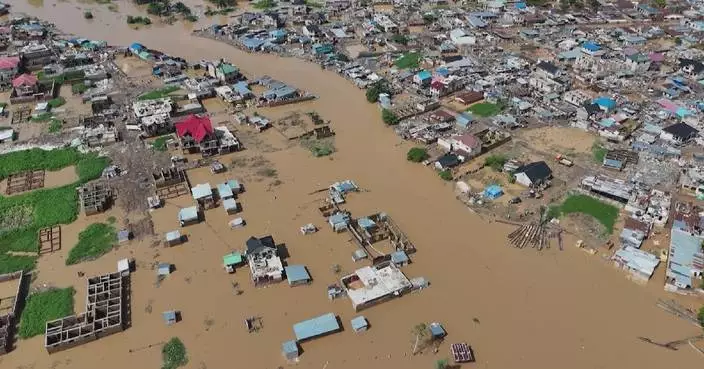The major earthquake in Myanmar has unexpectedly sparked discussions about US-China soft power competition. China has actively participated in disaster relief through coordinated aerospace technology and humanitarian diplomacy, while the US remains conspicuously absent even after the critical "golden window of 72 hours" have passed. US military officials have even expressed concerns that China's precise satellite imaging for rescue operations might expose American activities in Myanmar.
On March 28, 2023, a 7.9-magnitude earthquake struck central Myanmar, killing thousands of people, injuring teven more more, and causing widespread destruction that extended to Thailand and China's Yunnan province. The international community responded with high concern and swift action, with China becoming one of the first international rescue teams to arrive in Myanmar. Chinese rescuers reached the disaster area within 18 hours of the earthquake and successfully rescued six survivors on March 31. China has also pledged $14 million in humanitarian aid and dispatched about 400 experts and medical personnel for rescue operations. The China Aerospace Science and Technology Corporation mobilized 14 satellites to observe the disaster area, using satellite imagery to precisely locate severely affected areas and help rescue survivors.
In contrast, the US response has been notably slow. The US Embassy in Myanmar announced on the 30th that it would provide $2 million in aid, a figure that appears insignificant compared to China's commitment.
The Washington Post reported on the 31st that three days after the earthquake, US rescue teams had still not arrived in Myanmar, reflecting how Trump has transformed America's traditional role in disaster relief. NBC reported on the 31st that it remained unclear when US rescue teams would arrive in Myanmar. By the afternoon of the 31st, the critical "golden 72 hours" for earthquake rescue had already passed.
Former officials and heads of international aid organizations have indicated that this delay is primarily due to the Trump administration's decisions to cut USAID's budget and personnel.
An official from the US Embassy in Myanmar told The Washington Post that a delegation of three USAID staff members planned to arrive in Myanmar in the coming days, but there were no plans to deploy a Disaster Assistance Response Team (DART).
The US aid policy has been exposed during this disaster. Trump has made it clear during his second term that he wants to shut down USAID and has already cut foreign aid funding. According to a USAID official, two years ago, after a 7.8-magnitude earthquake hit Turkey and Syria, the US dispatched a Disaster Assistance Response Team within a day and quickly deployed two urban rescue teams, but current policy changes have restricted this capability.
Due to USAID budget cuts and staff reductions, almost all US development projects in Myanmar have been cancelled. In February this year, the US cut 39 out of 40 development projects in Myanmar, many of which could have been used for post-earthquake rescue and recovery work. At the same time, 14 of the 15 officials from the USAID Myanmar mission were indefinitely suspended in February. After the earthquake, the US government has been busy recalling some of these officials.
Former USAID official Chris Milligan directly stated that the US was unable to respond promptly due to the closure of government emergency response departments, allowing other countries, such as China, to take the lead in such disasters and to some extent fill the gap left by the US in international relief efforts.
Myanmar's State Administration Council reported on April 1 that the earthquake had killed 2,056 people as of that day, with thousands in need of humanitarian assistance, making the international community's need for humanitarian aid more urgent than ever. With the reinforcement of Chinese rescue teams, rescue teams from India, Malaysia, Russia, and other countries have also arrived in Myanmar, forming a multinational rescue network.
Meanwhile, China urgently deployed 14 satellites to not only help Myanmar obtain effective post-disaster data but also more precisely identify collapsed buildings, damaged roads, and other disaster conditions, providing a crucial basis for rescue deployment. Most critically, the satellite data can also plan routes for transporting supplies and provide appropriate temporary settlement site selection.
However, foreign media have indicated that China's satellite deployment has drawn special attention from the US military, as the US "had no idea that China had already become this powerful in the satellite field," causing Pentagon unease.
China's ability to mobilize 14 satellites for emergency orbit adjustments and complete comprehensive scanning of the disaster area in a short time, immediately transmitting precise images, demonstrates China's satellite capabilities for flexible maneuverability and coordinated operations.
Myanmar, as a hub connecting the Indian Ocean and southwestern China, has irreplaceable strategic value. Some analysts point out that the US has long tried to incorporate Myanmar into its Indo-Pacific strategic system through so-called "democratic transformation" and military infiltration, forming an encirclement of China.
However, China's current satellite orbit adjustment technology can not only be used for disaster relief but also applied to military reconnaissance, capable of precisely capturing the dynamics of key facilities. What concerns the US is that if such technology were used in the military field, it would weaken its global monitoring advantage of "finding the enemy first, acting first," thereby affecting the deployment efficiency of carrier strike groups and strategic bombers. Any US movements in Myanmar would also be observed by China.
In simple terms, China's satellite orbit adjustment to aid Myanmar's earthquake relief is both a challenge to US space technology advantages and a demonstration of international responsibility. The US "petty actions" on the Myanmar issue are essentially a continuation of its geopolitical instrumentalization, but due to insufficient action capability and strategic shortsightedness, they appear disadvantageous when contrasted with China's efficiency and pragmatism.
Deep Throat
** The blog article is the sole responsibility of the author and does not represent the position of our company. **















































